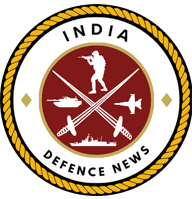The role of women in the Indian Armed Forces has evolved significantly over the past few decades, reflecting broader societal changes and the military’s increasing recognition of their capabilities. From their initial entry into the armed forces in non-combat roles to now being integral parts of combat and leadership positions, women have consistently demonstrated courage, resilience, and dedication. This article explores the journey of women in India’s armed forces, the challenges they face, and the future prospects for gender equality in the military.
The Journey of Women in the Armed Forces
Women’s participation in the Indian Armed Forces began in 1992 when they were first inducted into non-medical roles in the Army, Navy, and Air Force. Initially, their roles were limited to short-service commissions in fields such as logistics, legal, education, and engineering. However, the landscape began to change as women officers proved their mettle in various capacities.
One of the significant milestones was the induction of women into the Indian Air Force as fighter pilots in 2016. This groundbreaking decision paved the way for greater opportunities for women in combat roles, challenging the long-standing perception that certain military roles were unsuitable for them.
Achievements and Contributions
Women in the Indian Armed Forces have achieved remarkable feats, both in combat and non-combat roles. Some of the notable accomplishments include:
- Flight Lieutenant Avani Chaturvedi, Bhawana Kanth, and Mohana Singh: In 2016, these three women became the first female fighter pilots in the Indian Air Force, breaking barriers and setting a precedent for future generations.
- Lieutenant General Madhuri Kanitkar: Appointed as the Deputy Chief of Integrated Defence Staff in 2020, she became the third woman officer in the Indian military to attain a three-star rank, showcasing the growing acceptance of women in leadership roles.
- Indian Naval Ship (INS) Tarini: In 2017, an all-women crew aboard INS Tarini successfully completed a circumnavigation of the globe, demonstrating exceptional seamanship and endurance.
- Captain Tania Shergill: In 2020, Captain Shergill became the first woman officer to lead an all-male contingent during the Republic Day parade, highlighting the breaking of gender norms in ceremonial roles.
Challenges Faced by Women in the Armed Forces
Despite these successes, women in the Indian Armed Forces continue to face several challenges, including:
- Combat Roles and Perception: While women have made inroads into combat roles, there remains resistance to fully integrating them into certain frontline positions, particularly in the Army’s infantry and artillery units. Concerns about physical standards, operational effectiveness, and cultural factors often hinder their inclusion.
- Limited Permanent Commission Opportunities: Until recently, women officers were primarily offered Short Service Commissions, limiting their career progression. Although the Supreme Court’s 2020 ruling granted women officers the right to permanent commissions and command roles, the implementation process is still evolving.
- Balancing Family and Military Life: Like their male counterparts, women in the armed forces face the challenge of balancing their professional responsibilities with family life. However, societal expectations often place a disproportionate burden on women, making this balance more difficult.
- Gender Bias and Stereotyping: Despite significant progress, gender bias and stereotypes persist within the military, affecting the career growth and morale of women officers. Overcoming these biases requires a cultural shift and continued efforts to promote gender equality within the armed forces.
The Way Forward: Shaping the Future
The future of women in India’s Armed Forces looks promising, with several steps being taken to ensure greater gender inclusivity and equality:
- Expanding Opportunities: The armed forces are increasingly opening up new avenues for women, including in combat roles, leadership positions, and technical fields. This expansion is crucial for leveraging the full potential of women in the military.
- Improving Infrastructure and Support Systems: To create a more conducive environment for women, the armed forces are focusing on improving infrastructure, such as separate accommodation and sanitation facilities, and providing support systems like childcare facilities and flexible work arrangements.
- Training and Mentorship Programs: Enhancing training programs to address the unique challenges faced by women and establishing mentorship networks can help women officers navigate their careers more effectively and encourage more women to join the armed forces.
- Cultural Change and Awareness: Promoting a culture of equality, respect, and professionalism within the armed forces is essential for breaking down gender barriers. Awareness campaigns, workshops, and continuous dialogue on gender issues can contribute to this cultural shift.
- Global Collaboration and Learning: Collaborating with other nations that have successfully integrated women into their armed forces can provide valuable insights and best practices for India. Learning from global experiences can help accelerate the process of gender integration in the Indian military.
Women in India’s Armed Forces have come a long way from their initial roles in support services to now being at the forefront of military operations. Their journey, though fraught with challenges, has been marked by resilience, determination, and an unwavering commitment to the nation. As India continues to modernize its military and embrace gender diversity, the contributions of women will be increasingly recognized and valued. With the right policies, support systems, and cultural shifts, women in the Indian Armed Forces are poised to shape the future of the nation’s defense in meaningful and impactful ways.







